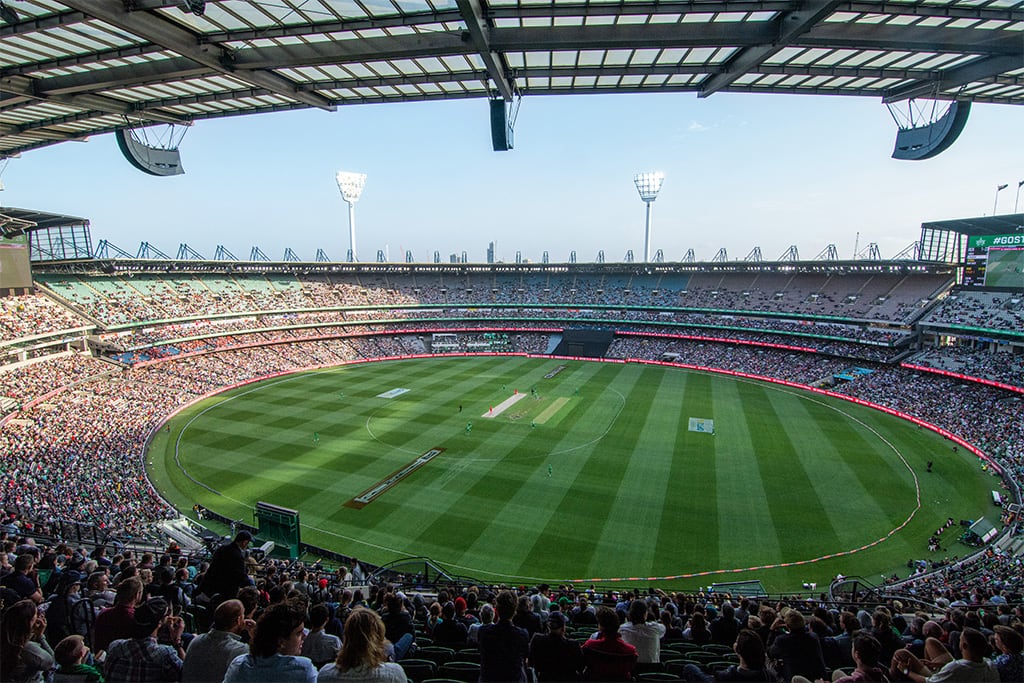
It’s All ’G
A huge d&b bowl PA leads a A$25m audio & EWIS upgrade at the Melbourne Cricket Ground.
Text:/ Christopher Holder
The Melbourne Cricket Club (MCC) has spent A$25m on a new audio system and there’s no direct return on investment.
The Melbourne Cricket Club, which managers the iconic Melbourne Cricket Ground (MCG), puts the fans first, and a large capital investment such as this is all about the fan experience — the key tenants, broadcasters and the advertisers are all given consideration, but ultimately the MCC is in the business of being crowd pleasers.
The audio and EWIS upgrade encompasses the bowl PA as well the vast areas within the stands — the concourses, bars and entry/exit points. In all, some 3500+ loudspeakers were installed.
RESULTS NOT NUMBERS
Running point on the audio upgrade was the MCC’s General Manager of IT & Innovation, Rey Sumaru. After an exhaustive submission and interview process, the MCC selected Auditoria as its audio consultant, while Rutledge AV, A Diversified Company won the job to install and integrate the technology. In fact, Rutledge AV was the head contractor on the job, subcontracting all the electrical, building and mechanical HVAC work.
Right from the first meeting, Auditoria — headed by Scott Willsallen — became aware that this was no ordinary upgrade. The directive, from the MCC board down, was for the audio to help provide the fans with an exceptional game day experience. This was to be far more than simply reaching a desired SPL or acceptable STI figure, this upgrade was about connecting fans with the on-field excitement and drama.
“Those early discussions were about how engaging, how interesting and how exciting we could make the entire journey of the fans’ day,” recalls Auditoria’s Scott Willsallen. “And using that as an overarching philosophy to every decision. This wasn’t empty PR-speak, it was a consistent theme in every meeting, and at every decision point through the project.”
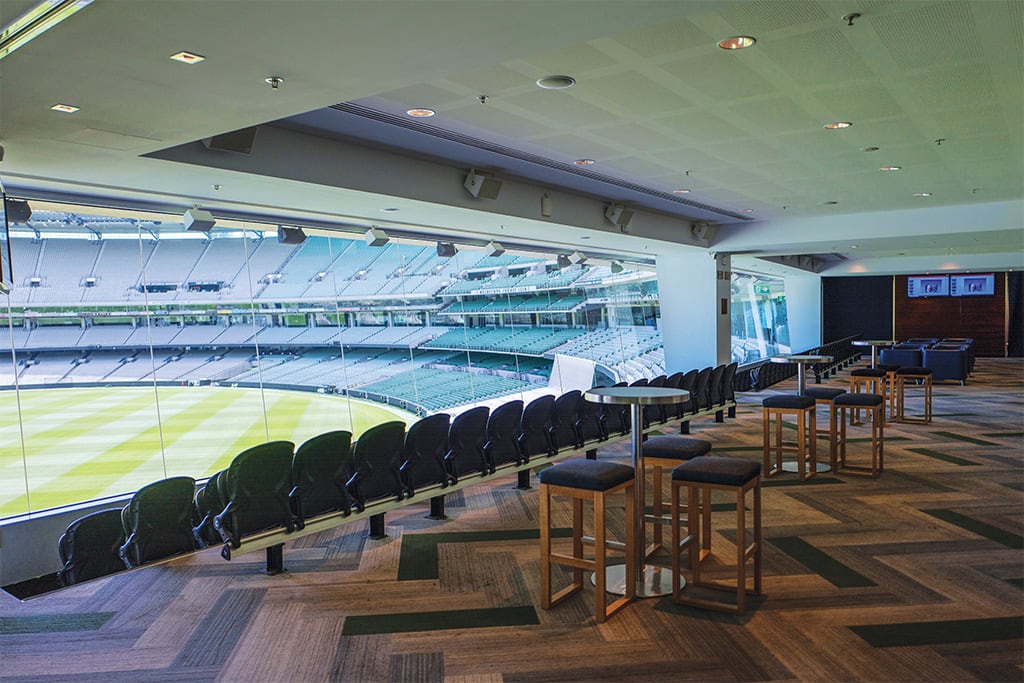
SMART STADIUM STRATEGY
Fan engagement and fan experience has led the MCC’s Smart Stadium strategy for some seven years now. The push was precipitated by the urgent need to address the fans’ desire to stay connected. High-density wi-fi was quickly rolled out. LED was then the main focus — firstly the LED ribbons around the ground and then the huge (326sqm apiece) Daktronics vision boards. Some 2000 IPTV displays were also part of the mix.
The audio upgrade leads Phase 2 of the technology push. MCC’s Rey Sumaru explains: “The fan feedback made it clear to us that the 10-year-old sound system didn’t meet expectations — it was too loud in certain places or you couldn’t hear it in other places.
“We had three options: a hybrid solution, where we could attempt to fix and improve the current systems; to only replace the loudspeakers in the seating bowl; or to upgrade the whole stadium’s audio.
“Our recommendation was for a totally new, custom-designed solution.”
THE CONTENDERS
Auditoria quickly got to work modelling various PAs in the bowl. Scott Willsallen picks up the story: “The message to us was clear: ‘we want this to be the best it can possibly be. Don’t let anything interfere with the early design process. If we get to a point where we have a design for the absolute best but the best is beyond the capacity of the structure of the roof or beyond the budget, then we’ll come back from that point if necessary. But the goal here is to design something that is as good as it can possibly be within the constraints of the building architecture.’”
The Auditoria design for the bowl PA was whittled from some 10 or 12 possibilities down to two, with consideration not only given to weight, cabling requirements, output and coverage, but to manufacturer and regional distributor support.
After a tender process, d&b audiotechnik won the day via its Australian distributor, NAS, based on a V- and Y-Series bowl PA design.
STRAIGHT OUT OF THE GATE
The headline is no doubt the massive d&b V- and Y-Series bowl PA and the equally massive undertaking it was to get the arrays into position. But what makes this MCG story more than a ‘big PA in a big stadium’ is the thought, care and investment that has gone into the entire fan experience; an experience that starts the moment fans enter the giant sports coliseum’s orbit.
As Auditoria’s Scott Willsallen and senior consultant Luis Miranda spent time with the MCC project team, they developed a strong sense of how great audio could assist in helping fans get to their seats and navigate ticketing and security. An understanding of the fans’ journey led to Auditoria designing two entry systems and one exit system.
The first is a longer-throw system above the entry gates. From about 60m away, the PA begins to help direct fans to the right gate. As you approach the gate a row of 12 or 16 (depending on the gate) d&b 5S loudspeakers provide less frequent and more specific messaging (‘have your ticket out’, ‘have your bags ready for inspection’ etc).
After the game is over an entirely separate set of loudspeakers takes care of exit messaging.
As Scott Willsallen puts it: “If you’re entering, then those systems are the ones that are pointing at your face. As you exit, a completely different set of loudspeakers point at your face.” As you exit there will be some 12 or 16 d&b 5S surfacemount loudspeakers pointing at your face, assisting with public transport info and more.
These are high-quality, high-performance, relatively high-cost public announcement loudspeakers and go some way to exemplifying the customer-focussed approach to this upgrade. “It’s about intelligibility and listener comfort,” notes Scott Willsallen. “Plus it provides more options down the track if the MCC decides to use those loudspeakers for entertainment content — the system is up to the task.”
The other hero of the messaging and wayfinding PA systems is Q-SYS. Few will be surprised to hear that Q-SYS was given the job of routing digital audio to and fro around the stadium but it also distinguished itself in many of its control roles. In this case, the matrix of matching the right recorded message to the right zone on the correct game day was deceptively complex but Rutledge AV provided the MCC with a deceptively easy Q-SYS-based control interface to ensure smooth sailing. The entry/exit systems also allow messages to be recorded and played on the fly, if necessary, along with the ability for MCC spruikers to wander with a Shure wireless mic and take over the messaging. “Rutledge did a great job building that control interface,” notes Scott Willsallen. “It’s super easy to use and all done in Q-SYS.”
Great Southern Stand (15 arrays themselves comprising):
2 arrays of 6× d&b Y-Series array elements
8 arrays of 8× d&b V-Series array elements
13 arrays of 8× d&b Y-Series array elements=
15 arrays of 3× d&b V-Series subs
Northern Stand (15 arrays themselves comprising):
2 arrays of 6× d&b Y-Series array elements
7 arrays of 8× d&b V-Series array elements
12 arrays of 10× d&b Y-Series array elements
13 arrays of 3× d&b V-Series subs
The V arrays cover the lower levels of the bowl and the Y arrays cover the upper levels of the bowl. Generally, there is a Y array every two bays and a V array every fourth bay. This makes the V and Y arrays coincide in a long line. There is a sub array paired to (almost) every line array.
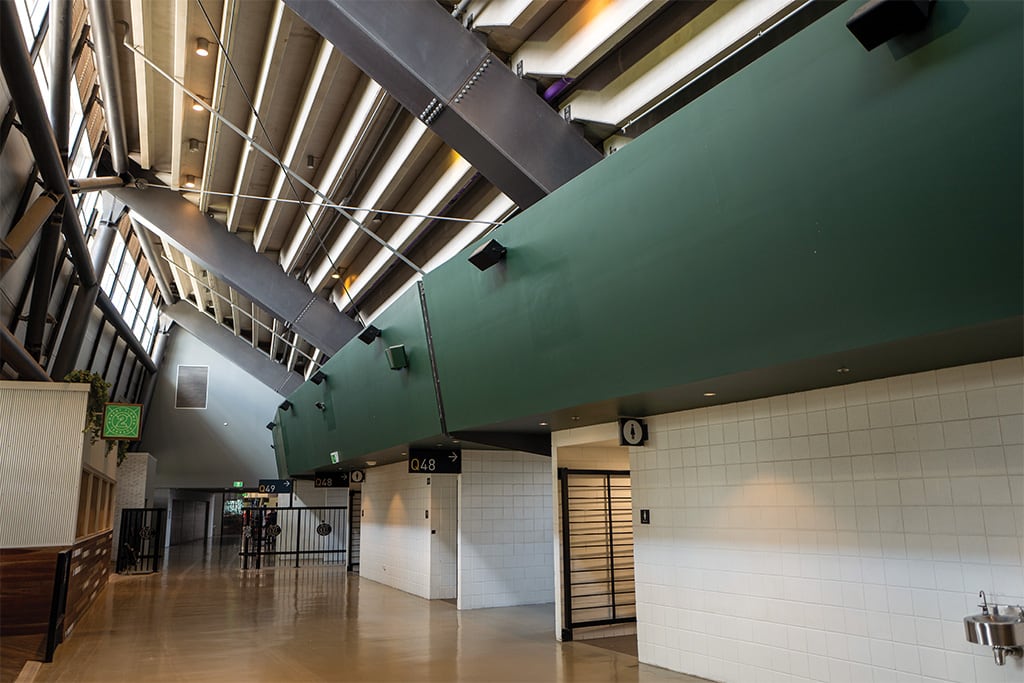
SMART STADIUM STRATEGY
Fan engagement and fan experience has led the MCC’s Smart Stadium strategy for some seven years now. The push was precipitated by the urgent need to address the fans’ desire to stay connected. High-density wi-fi was quickly rolled out. LED was then the main focus — firstly the LED ribbons around the ground and then the huge (326sqm apiece) Daktronics vision boards. Some 2000 IPTV displays were also part of the mix.
The audio upgrade leads Phase 2 of the technology push. MCC’s Rey Sumaru explains: “The fan feedback made it clear to us that the 10-year-old sound system didn’t meet expectations — it was too loud in certain places or you couldn’t hear it in other places.
“We had three options: a hybrid solution, where we could attempt to fix and improve the current systems; to only replace the loudspeakers in the seating bowl; or to upgrade the whole stadium’s audio.
“Our recommendation was for a totally new, custom-designed solution.”
THE CONTENDERS
Auditoria quickly got to work modelling various PAs in the bowl. Scott Willsallen picks up the story: “The message to us was clear: ‘we want this to be the best it can possibly be. Don’t let anything interfere with the early design process. If we get to a point where we have a design for the absolute best but the best is beyond the capacity of the structure of the roof or beyond the budget, then we’ll come back from that point if necessary. But the goal here is to design something that is as good as it can possibly be within the constraints of the building architecture.’”
The Auditoria design for the bowl PA was whittled from some 10 or 12 possibilities down to two, with consideration not only given to weight, cabling requirements, output and coverage, but to manufacturer and regional distributor support.
After a tender process, d&b audiotechnik won the day via its Australian distributor, NAS, based on a V- and Y-Series bowl PA design.
STRAIGHT OUT OF THE GATE
The headline is no doubt the massive d&b V- and Y-Series bowl PA and the equally massive undertaking it was to get the arrays into position. But what makes this MCG story more than a ‘big PA in a big stadium’ is the thought, care and investment that has gone into the entire fan experience; an experience that starts the moment fans enter the giant sports coliseum’s orbit.
As Auditoria’s Scott Willsallen and senior consultant Luis Miranda spent time with the MCC project team, they developed a strong sense of how great audio could assist in helping fans get to their seats and navigate ticketing and security. An understanding of the fans’ journey led to Auditoria designing two entry systems and one exit system.
The first is a longer-throw system above the entry gates. From about 60m away, the PA begins to help direct fans to the right gate. As you approach the gate a row of 12 or 16 (depending on the gate) d&b 5S loudspeakers provide less frequent and more specific messaging (‘have your ticket out’, ‘have your bags ready for inspection’ etc).
After the game is over an entirely separate set of loudspeakers takes care of exit messaging.
As Scott Willsallen puts it: “If you’re entering, then those systems are the ones that are pointing at your face. As you exit, a completely different set of loudspeakers point at your face.” As you exit there will be some 12 or 16 d&b 5S surfacemount loudspeakers pointing at your face, assisting with public transport info and more.
These are high-quality, high-performance, relatively high-cost public announcement loudspeakers and go some way to exemplifying the customer-focussed approach to this upgrade. “It’s about intelligibility and listener comfort,” notes Scott Willsallen. “Plus it provides more options down the track if the MCC decides to use those loudspeakers for entertainment content — the system is up to the task.”
The other hero of the messaging and wayfinding PA systems is Q-SYS. Few will be surprised to hear that Q-SYS was given the job of routing digital audio to and fro around the stadium but it also distinguished itself in many of its control roles. In this case, the matrix of matching the right recorded message to the right zone on the correct game day was deceptively complex but Rutledge AV provided the MCC with a deceptively easy Q-SYS-based control interface to ensure smooth sailing. The entry/exit systems also allow messages to be recorded and played on the fly, if necessary, along with the ability for MCC spruikers to wander with a Shure wireless mic and take over the messaging. “Rutledge did a great job building that control interface,” notes Scott Willsallen. “It’s super easy to use and all done in Q-SYS.”
ROAR OF THE CROWD
It’s always been a paradox: some of the most expensive seats in a stadium are often the most disconnected from the atmosphere of the game. Sure, the catering might be amazing but often the atmosphere in corporate suites and function rooms is sterile.
A new feature of the MCG audio upgrade sees crowd atmosphere being fed back into the bars via the loudspeaker systems. Stadia may be one of Auditoria’s strong suits but so are large-scale opening and closing ceremonies, which require sophisticated ambience microphone setups for broadcast sound. So Scott Willsallen was keen to take the quality of the piped crowd noise up a few notches.
Scott Willsallen: “It would have been very easy to stick an SM58 mic on the catwalk and go with that. But we also thought this would be a good opportunity for us to provide the broadcaster with a more interesting crowd sound. We located 20 microphones around the stadium. These are mid-side, dual-element shotgun mics, which allow us to blend how much mid versus how much side we want on a mic-by-mic basis. This means you can fine tune your crowd mic sound depending on the size of the event, and create presets based around how the audience is dispersed and how full the bowl is. Those presets create a stereo mix that’s distributed to all of the media areas. What’s more, it appears as a fader on the touchscreens in all of the bars and function rooms so they can choose to have that audience feed or not.”
FEEDING THE BOWL
Once through the turnstiles you’re part of the game day experience and the focus of all the fan-facing technology is about engagement and entertainment. Leading the charge is the prodigious d&b bowl PA.
The line source bowl PA comprises 72 hangs. Each hang comprises various combinations of V- and Y-Series elements, and V Subs. Each loudspeaker element is addressed by a d&b amplifier.
Designing a system for optimal coverage is one thing; designing it to reside in the roof structure of an existing grandstand is another entirely.
The MCG comprises two main grandstands (north and south), each an entirely different structure.
It was Rutledge AV’s task to attach the PA to the roof. The design went through a number of iterations in order to keep weight down, as well a refinement of the approach to allow Rutledge AV and its specialist sub-contractors time to install the PA between the venue’s existing event schedule, and in a way that had minimal impact on the hallowed turf. Able Engineering took care of the specialist fabrication work, ITE Engineering was engaged for its hoist and fly gear experience, and Vertigo provided the specialist high-altitude rigging expertise.
The frames and arrays were fabricated and assembled off site. Each array was then transported onto the ground and raised to a higher stand level whereupon Vertigo took care of the final stage of winching it into place. At this stage Rutledge AV, headed by project director Matt Edgcumbe and project manager Daniel Woodward, could only look on with all fingers and toes crossed.
“The beauty of the preliminary meetings and refining the approach,” recalls Matt Edgcumbe, “was we went from embarking on a task of almost insurmountable difficulty, to something that may not have been ‘routine’, necessarily, but at least was highly manageable. The guys we were working with were excellent. They were all willing to make it work.”
“The aesthetics of the array are worth noting,” observes Rey Sumaru. “We didn’t want something that looked like a bolt-on. The arrays blend in with the stadium architecture.”
“In the case of the Northern Stand, the shape of each frame was different because of the arc of the roof,” observes Scott Willsallen. “We had the architectural drawings validated with a survey but you only have to be out by a degree or two to really notice it when you’re throwing 45m to the first row of the seating. Thankfully, the installation matched the drawings and then, switching it on, the reality matched the plan, which was a very pleasing outcome.”
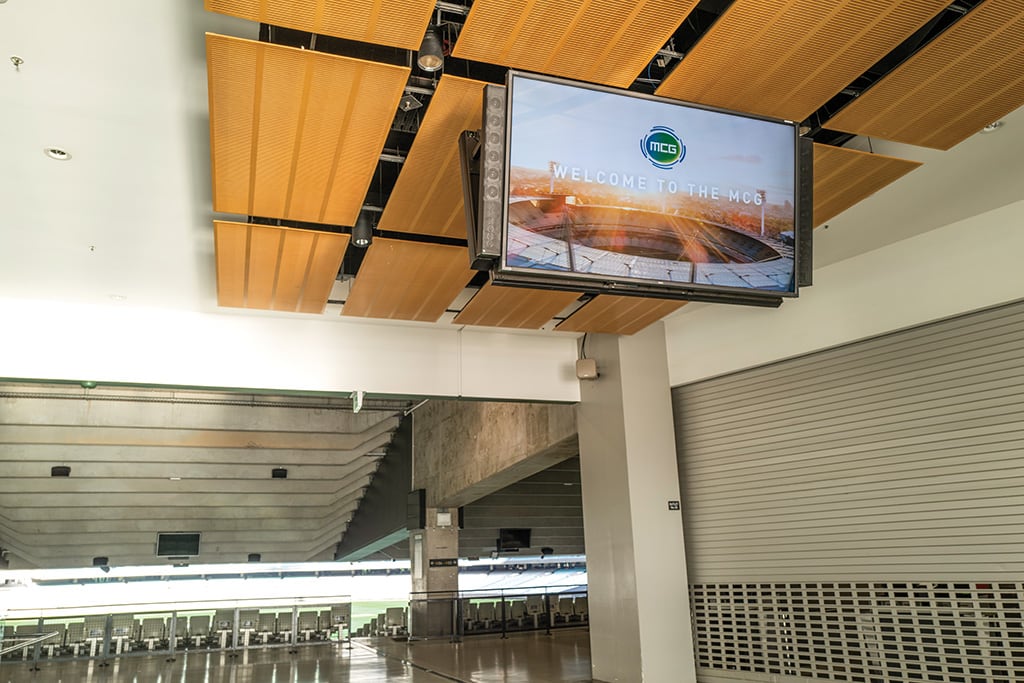
EVEN COVERAGE
Audio priority number one was even coverage — every seat in the house needed to be the best seat in the house. The d&b range is engineered to assist system designers in this regard.
d&b V-Series takes care of the long throw of the arrays and Y-Series the shorter throw requirements for the upper bowl.
“Electronically, the gain difference between the two is minimal because the V Series is a more efficient loudspeaker,” explains Scott Willsallen. “So we use the more efficient box for the longer throw. The same philosophy applies to the under balcony systems, where we run d&b E8s and the xS-Series 5S loudspeakers and subs. The whole system balances. Select the right product in terms of sensitivity and coverage, and the system as a whole isn’t choked by one poorly chosen product.”
This is an important factor when designing a huge PA ecosystem. If all the loudspeaker components of the stadium system are correctly selected, positioned and commissioned then no single enclosure or amplifier will red line before another. Turning up the MCG PA is a like pushing the stick on an A380 rather than co-ordinating a flying sculpture of 3500 drones.
UNDER BALCONY
With an official capacity of 100,024, the Melbourne Cricket Ground stands at number 10 on the global list of stadium heavyweights. Both the Northern and Southern MCG stands have vast under balcony areas, shadowed from the main PA. Previously, the under balcony areas were under-serviced, while the new design would ensure the 10s of thousands of under-balcony fans would enjoy uncompromised sound.
“You shouldn’t be disadvantaged if you’re two rows further forward as opposed to two rows behind,” said to Scott Willsallen. “A lot of effort went into delivering the same kind of energy — sound pressure level, bandwidth and excitement — in those under-balcony areas.”
Each of the 58 under-balcony bays packs a hefty PA punch: a cardioid sub, four d&b E8 eight-inch two-ways and four d&b 5S five-inch two-way loudspeakers. As you walk from the field of play and as soon as you can’t see a V Series array speaker you’re on axis of the primary coverage of the d&b xS-Series 5S coaxial loudspeakers. Move a little further up the bowl and you will covered by a pair of E8s and a cardioid sub. Another four or five rows back and the last row of E8s takes over, which continue to provide coverage up into the standing room areas.
TAMING THE ACOUSTICS
Stadia are almost by definition, acoustically hostile. They are huge concrete edifices with an endless array of reflective surfaces only ameliorated somewhat by the soft, squidgy human occupants come game day. Stick a roof on and things only get worse.
Any attempt to soften the acoustics of a stadium feels futile. Acoustic treatment might be routinely applied to other performance venues where you pump sound reinforcement, but a stadium is seen as a lost cause.
Not so the MCG, which installed an extraordinary amount of sound absorbing acoustic material — 3000sqm, in fact.
There are two main areas benefitting from the Megasorber acoustic treatment: in the under balcony seating which is now covered by so much more PA; and the vast atrium areas at the top of the Northern Stand, home to bars, concession stands and other cacophonous public areas.
“I don’t think we’ve ever previously been given the chance to specify acoustic panelling in a stadium,” notes Auditoria senior consultant, Luis Miranda. “The reason for that is the cost, as well as durability concerns in the weather, and the panels’ ability to absorb broadband noise.”
Luis had experience working with the Australian-made Megasorber product in industrial applications where it proved to be hard wearing. The fact that Megasorber produces a 100mm-thick panel was also a big drawcard: “It’s twice as thick as most other panels and means we get a fuller-frequency attenuation,” notes Luis Miranda.
The Rutledge AV team installed the acoustic panels by gluing it to the ceiling of the atria and around the under balcony areas. The results have been remarkable, taming the reverb time of the atria from 3.5s down to 2.5s. The Megasorber panels have also helped to restrict the extra energy going into the under-balcony areas from leaking back out, maintaining a higher intelligibility for those in the coverage of the main arrays.
“The difference is quite amazing,” observes Rutledge AV’s Daniel Woodward. “If you walk between Level 1 of the Northern Stand and Level 1 of Southern Stand [without the acoustic treatment], you can instantly hear the difference. The background noise is so much more controlled in the North. It’s made a huge difference.”
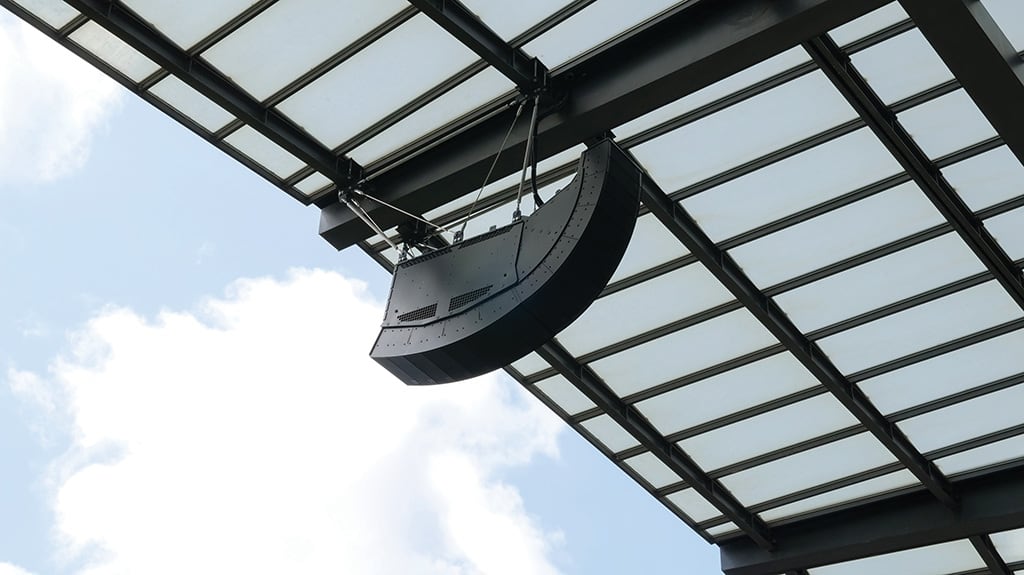
CONVERGED NETWORK
The MCG is committed to running all its AV and IT traffic on one converged network: everything from the IPTV, the corporate networks, the wi-fi, the LED ribbon boards and now the PA digital audio distribution run on the one converged IP network.
Q-SYS is renowned for playing nicely on the network which was a big selling point for the MCG.
“With Q-SYS on our network we can integrate it into our building management system, which is now integrated to the EWIS,” said Rey Sumaru. “From an operational perspective — ease of operation, ease of management and maintenance — it’s been a huge improvement. We’ve got visibility of the whole network.”
Rutledge AV has had the AV maintenance contract for the MCG for some time now and getting the audio and EWIS on the network has been a huge boon for its on-site team.
“We didn’t have monitoring of the old EWIS,” explains Daniel Woodward. “We relied on a monthly test to determine if a zone wasn’t working, and a yearly test of every speaker. Now it’s all completely monitored.”
“EWIS compliance was a key reason for using Q-SYS,” concurs Matt Edgcumbe. “We had to demonstrate to the building surveyor that we are using EWIS-compliant components throughout the whole stadium.”
Rutledge AV has designed the signal transport network to be dual redundant, with two Q-SYS Cores each running AES digital audio and an analogue audio backup to the amplifiers. The venue is broken up into VLANs — main bowl, bars, function rooms, production suite, EWIS etc — each with their own pair of Q-SYS Cores.
PRODUCTION CAPABILITY
The MCG’s game-day production capabilities have been beefed up considerably. At its heart is a new Digico SD9 mixing console (with dual redundant 4REA4 mix engines) stationed in the MCG’s System Control Room. The MCC’s AV & Broadcast Lead, Tim Phypers, and his team now have access to more audio sources and inputs around the ground that can feed back into the system. And with the new console’s companion Waves Soundgrid plug-in platform, the team has all the processing power it needs.
The MCC has also invested in sufficient gear to cater to most live production challenges, such as live bands and events. The longer-term savings from owning, rather than hiring, the gear will quickly repay the initial investment.
The armoury now includes high-spec Shure Axient wireless equipment and the Shure Frequency Manager.
The results Tim Phypers and his team are now achieving are like night and day: “No matter where you’re sitting, you’re getting the highest possible audio,” Tim notes.
The difference isn’t limited to the attention of AV techs and audio boffins. Opera singer, Greta Bradman (The Don’s granddaughter), sang the national anthem on day one of the 2019 Boxing Day Test in front of some 80,000 fans. It was a stunning performance, but the positive response wasn’t limited to those listening in the stands. “The feedback we received from Greta was really gratifying,” said Rey Sumaru. “She really noticed the change in the sound quality – there wasn’t any disconcerting echo on the field of play and she said she felt very comfortable with the system, which was reflected in her amazing performance.”
ICONIC STADIUM
The Melbourne Cricket Club is more than a stadium manager. The club is the custodian of Australia’s home of sport and takes its responsibility to improve and enhance the icon very seriously. But as a venue, at the end of the day a key element to the MCG’s success is hosting events and attracting audiences.
“One of the biggest challenge stadiums have these days is getting fans out of their living rooms and sports bars,” reflects Rey Sumaru. Melbourne can be wet and miserable in football season and oppressively hot in cricket season, so it’s our job to provide an experience that encourages fans to return — to provide an atmosphere they can’t get anywhere else. That’s a key reason for the investment. “In addition, we want to be known as one of the most iconic stadiums in the world, not just because of our size, but because of what we do – the experiences that we deliver. We want to be at the forefront, so we can’t afford to rest on our laurels. This extensive upgrade to the stadium’s audio system it at the heart of that desire. We are leading the way and investing in new technology to ensure that all visitors to the MCG have an incredible experience, no matter where they sit!”
KEY PERSONNEL
Rey Sumaru, MCC General Manager IT & Innovation: “This is not a project where they deliver it and walk away. The association and the relationships go a long way past the project. We’ve valued the passion and support of our key partners — it’s been very evident in this project. Nothing has been too difficult.”
Scott Willsallen, Auditoria: “It’s a credit to Dan Woodward and the Rutledge AV team for the way they managed such a massive project within an operating environment, with no impact on daily operations. This project touched every area of the building and at no point was any part of the stadium without audio facilities. A remarkable effort.”
Melbourne Cricket Club
General Manager IT & Innovation: Rey Sumaru
Project Manager: Susi Schroeder
AV & Broadcast Lead: Timothy Phypers
Rutledge AV, A Diversified Company
Project Manager: Dan Woodward
Project Director: Matt Edgcumbe
Project Coordinator: Susanna Salmi
Project Assistant: Tegan Collier
Site Supervisor: Tim Lesich
Design Engineers: Paul Jamieson, Menaka Gunawardana
CAD: Mehak Bansal, Jarryd Edgcumbe
Field Engineers: Victor Laubscher, Jesse Widgery
Network Engineer: Alex Bollom
Auditoria
Principal: Scott Willsallen
Senior Consultant: Luis Miranda
Case Meallin
Project Manager: Emma Pearce
ITE
Project Manager: Frank Agosta
Engineers: Martin Clenick, Frank Hall
Supervisor: Andrew Agosta
Vertigo:
Project Manager: Daniel Hutchinson
Supervisor: James Kiely
Able Industries:
Project Manager: Michael Martyn
Engineer: Andrew Briggs



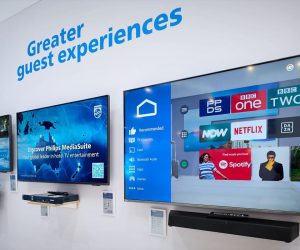




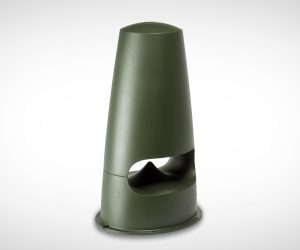
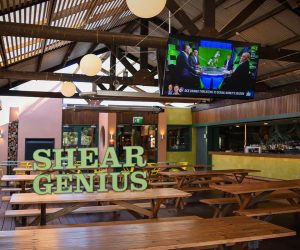


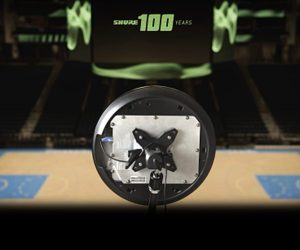


RESPONSES